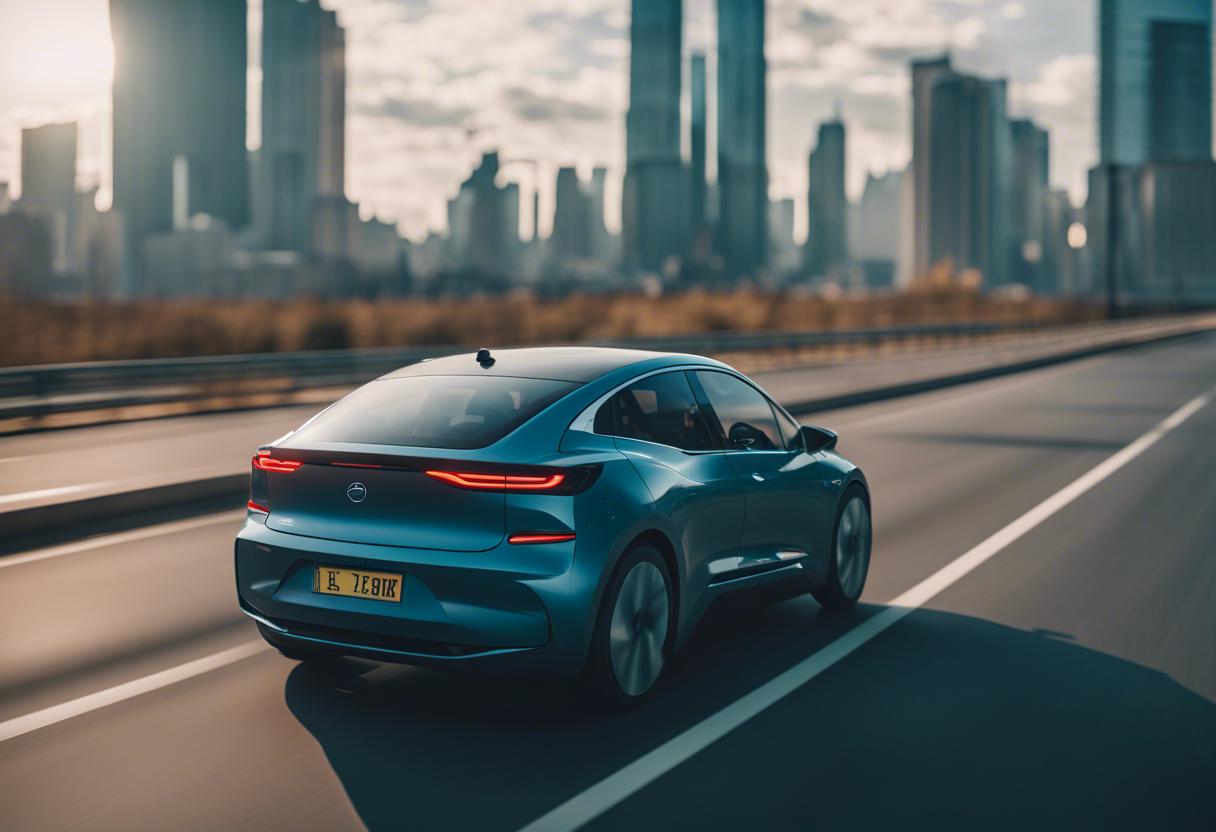Is it a standard feature for all electric vehicles (EVs) to have self-driving features?
Somewhat, one might argue. Yet, virtually all new automobiles possess some sort of self-driving functionality. However, our language may be misleading as technically, the answer is also negative. Currently, no EVs or cars with combustion engines possess full self-driving abilities, considering the term’s varied interpretations.
For some individuals, self-driving functionality implies a vehicle that can independently navigate public roads with no human input required. We must make it unambiguously clear that presently, there is not a single mass-produced car available on the market that has this capability. Counter to the unjustified exaggeration and misleading nomenclature of complete self-driving, it’s apparent that certain car purchasers, primarily but not solely Tesla customers, have misunderstandings. Emphasising once more, no mass-produced car, including Teslas, is entirely self-driving at this moment in time.
However, there are some experimental models and specially produced “robotaxis” currently operating in certain global regions that, theoretically, could be self-driving. But these are not purchasable at car dealerships — they are essentially test vehicles being monitored in real-world environments.
You might be wondering why we began by stating ‘somewhat, yes’. Were we misleading you purposely?
Absolutely not. Current automobiles do possess built-in systems that form the foundation for future self-driving technology. Known by the technical shorthand ADAS, which stands for automated driver assistance systems, these features are a more accurate description as they are not completely self-driving. These systems simply exist to provide assistance to the driver, assisting in accident prevention or at the least, helping to mitigate the severity of an accident. Such systems are already routinely found in many, if not most, new cars.
The text talks about various modern automobile technologies such as adaptive cruise control, which uses radar to maintain safe distance from the preceding vehicle on highways; lane-keeping assistance that utilises cameras to monitor road lines and provides minor steering interventions to aid lane maintenance; and automated emergency braking systems. These braking systems, with the help of cameras, radar, and ultrasonic sensors, can identify road hazards from an abruptly stopping vehicle, a pedestrian crossing without caution, or a cyclist suddenly crossing paths, and then fiercely apply the brakes to evade or at least minimise a collision, thereby reducing potential fatalities or injuries.
The possibility of integrating these systems with more advanced sensors and software to construct a self-driving vehicle indeed exists. However, the realisation of this concept still seems distant, let alone it being available for purchase at your neighbourhood car outlet. Primarily, the sensors in question come at a high cost and the requisite software that allows swift and dependable decision making while driving is not just costly but is yet to be fully developed, at least not to the extent that a car could navigate everywhere independently.
Indeed, a noticeable reverse trend is witnessed among many auto manufacturers who are increasingly moving away from completely autonomous driving technology and instead focusing on systems that aid human drivers without usurping total control. For instance, Polestar – a company evolved from Volvo and hence, having deep-rooted safety considerations – has lately announced its decision to not offer autonomous driving systems unless they can undeniably outperform an accomplished human driver.
Similarly, Renault has expressed its inability to foresee a near future wherein autonomous technology is economically viable enough to offer commercially to a wide consumer base. While Renault recently launched a completely autonomous bus service transporting spectators to and from the parking area during the French Open Tennis tournament at Roland Garros Stadium, its engineers believe that this autonomous public transit system is a finer fit for utilising the technology than trying to incorporate it in personal vehicles.
Are we on the cusp of welcoming high-level autonomous vehicles soon? To put things into perspective, let’s take the insights of Dr Steve Chien, an eminent researcher and technical group leader for the renowned artificial intelligence unit at NASA’s prestigious Jet Propulsion Laboratory (JPL). Yes, the very same JPL and NASA associated with dispatching deep-space exploratory devices. Dr Chien is at the helm of developing AI technologies that aid these devices to independently resolve issues, removing the necessity for them to stay idle for prolonged periods awaiting ground commands every time an unforeseen issue arises. What is Dr Chien’s standpoint on autonomous vehicles?
“Comparatively speaking,” Dr Chien affirms, “designing an autonomous vehicle capable of competently navigating through the streets of any city can arguably be a more daunting task than programming an autonomous spacecraft. The two tasks present unique challenges. While the unknown element of the environment makes the spacecraft more difficult to configure, we know for certain that it won’t have to navigate through erratic driving behaviour, traffic and inclement weather. To offer an example, native drivers in Los Angeles, where I’m based, struggle to adapt to rain-induced road conditions due to its rarity.”
So, in response to the question, the current stage of electric vehicles, or any other vehicle for that matter, is that they don’t possess full autonomy. Although new cars have technology related to autonomous functioning, all vehicles currently available for purchase, even the most expensive, sophisticated, and notably Tesla models, mandate the presence, alertness and skill of a human driver.

